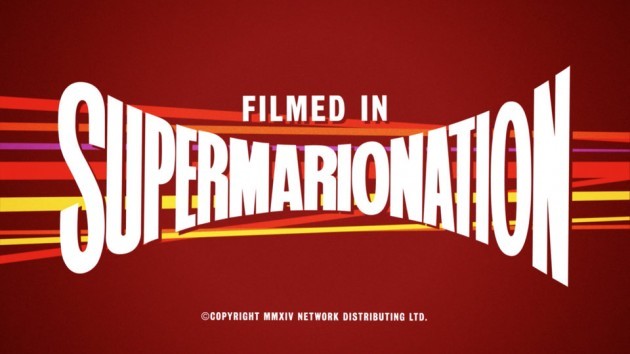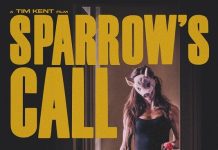Did you know that the chic word for a puppet is a ‘marionette’? But what about ‘supermarionation’? Our trusted OED doesn’t recognise it, won’t allow it in its authenticated annals of words and meanings. It turns out that ‘supermarionation’ is a three-way portmanteau of ‘super’, ‘marionette’ and ‘animation’, meaning, we learn, in showbiz terms: the filming of puppets (with glass fibre heads) animated by wires who also happen to ‘talk’, using the technique of voice synchronisation or lip-synching. So that’s that one cleared up. What about the documentary itself?
Weird things, puppets. Animate yet inanimate, real yet unreal. Ah, but that, we learn, is the very secret of their success: their unreality. The moment they start becoming just a little bit real, well, that’s the death of them (if you believe they lived in the first place, of course).
This is the story of A.P. Films, an independent British film production company, founded by Gerry Anderson and Arthur Provis on a dull Slough trading estate, and later joined by Gerry’s wife, the indefatigable (and very glam) Sylvia. A.P. Films operated from the late 50s into the 70s with its peak in the swinging 60s – and we watch it grow from a little-to-grand gem of independent British film-making, rising from near bankruptcy to Lady Penelope and Thunderbirds go go go!
The story of A.P. Films is told in a simple, linear documentary style. It’s not complicated, you are not required to think, only watch, admire, and occasionally chuckle. The trouble is, if there is a trouble, is that the story can get a little one-dimensional, like the puppets. A bit wooden, or . . . glass fibre. You can sometimes see the strings in this documentary. But that’s fine, it’s nostalgic by theme, a young Nicholas Parsons. It’s a weekend stroll down Memory Lane, the story of an independent British film company which went from minions to champions, which wooed and wowed the Americans.
A.P. Films was responsible for a number of supermarionation TV series, from ‘The Adventures of Twizzle’, ‘Torch the Battery Boy’, through to ‘Stingray’, ‘Thunderbirds’ and ‘Captain Scarlet and the Mysterons’. We learn of the development of puppetry and its techniques, the architecture of puppetry itself, the transition from black & white to Technicolor (note the Americanised influence), and the literally explosive development of special effects – these explosions were big-time, formidable precursors to our modern CGI blow-everything-up techniques.
A.P. Films loved their alliterative characters. We have, for instance: Tex Tucker (‘Four Feather Falls’), Mike Mercury, Mitch the Monkey and . . . Jimmy (‘Supercar’), square-jawed all-round-tough-guy Troy Tempest (‘Stingray’, modelled on James Garner). We see a clear pattern of Sci-fi emerging, secret agents all over the shop, combating enemy terrorists; and this perhaps was not surprising since the 60s, while swinging, were also the focus of the Cold War and East versus West. Many of the series created by A.P. Films were undeniably based on this ‘versus’ motif, this us versus them. Throw in the mix the Space Race and we get creations like ‘Supercar’, ‘Fireball XL5’, ‘Stingray’, ‘Thunderbirds’, ‘Captain Scarlet’, and even the totally wacko ‘Joe 90’.
A.P. Films, by their own admission, hit the heights with the Thunderbirds series, with surely the best of these characters our own ice-cool-super-agent Lady Penelope and former-crim manservant cockney-twanged (Aloysius) Parker. Thunderbirds moved to the big screen and nosedived, as did, pretty much, A.P. Films. The end of the fibre head was nigh. But A.P. Films had left its mark, innovative exponents in supermarionation and clear forerunners to today’s DreamWorks and Pixar. Would we have Shrek or Nemo or Buzz Lightyear without A.P. Films?
Filmed in Supermarionation is a behind-the-scenes story of a triumphant British enterprise, which joined hands with Hollywood (thanks to the scary Lew Grade), in the story of TV and, wider, cinema generally. You won’t get bored, but you may need patience. This is a slow, reflective, and often whimsical ride; more Teacups than rollercoaster. It’s also a celebration of colour, in a very Matisse sense (check out Captain Scarlet’s radiant red booties), and a celebration of eyebrows (they really did come bigger in those days).
It’s genuinely heart-warming to watch the old crew recount stories with such fondness – we get the sense they were a real team. But, more so, as Gerry Anderson says – they were, above all, ‘pioneering days’, which carved a very futuristic CGI path.
Verdict ★★★





























